ORIF - Palmar plate
1. Preliminary remarks
Fracture assessment and decision making
These are partial articular fractures involving the radial styloid, and can occur because of either avulsion injuries, associated with intercarpal ligament injuries, or compression injuries of the scaphoid facet of the distal radius.

These fractures may also involve rotation of the radial styloid and/or compression of the articular surface. CT scans in axial and coronal projections are advisable for preoperative assessment and planning.
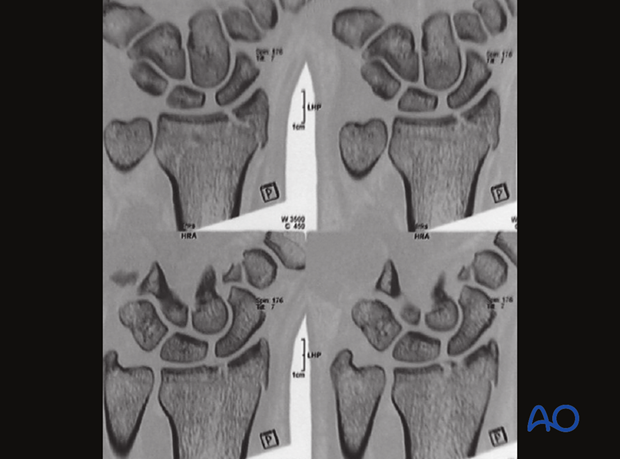
Plate choice
An L-shaped locking plate may be used. Care needs to be taken to ensure the plate can achieve adequate fixation of the radial styloid fragment.
Plates with variable angle screw options may be useful in this situation.
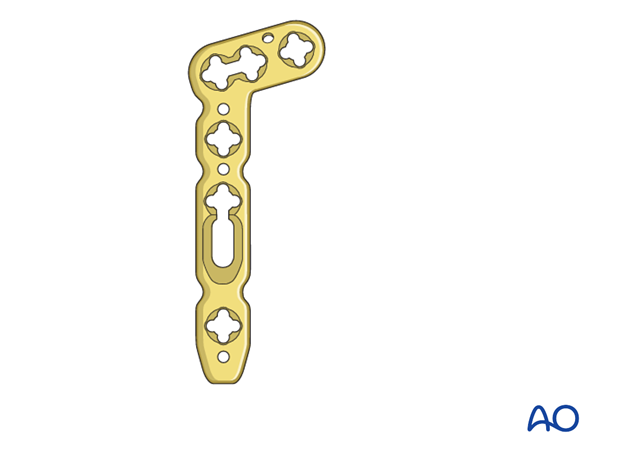
Choice of approach
If dealing with a rotated avulsion fracture without associated ligament injury, this can be approached through a palmar incision on the radial side.
If there is a compression fracture with impaction of the articular surface, and/or a scapholunate ligament disruption, it is better to use a dorsal approach to the radius.
A thorough knowledge of the anatomy around the wrist is essential. Read more about the anatomy of the distal forearm.

Provisional reduction in displaced fractures
Reduction is achieved by applying longitudinal traction either manually or using Chinese finger traps.
The reduction is maintained by a temporary splint.
If definitive surgery is planned, but cannot be performed within a reasonable time scale, a temporary external fixator may be helpful.
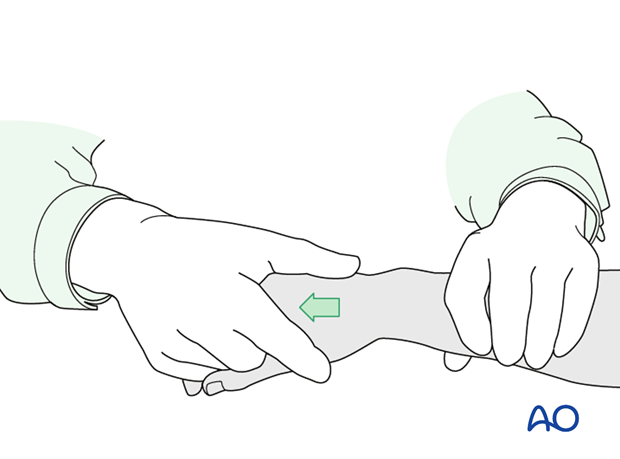
2. Associated injuries
Median nerve compression
If there is dense sensory loss, or other signs of median nerve compression, the median nerve should be decompressed.
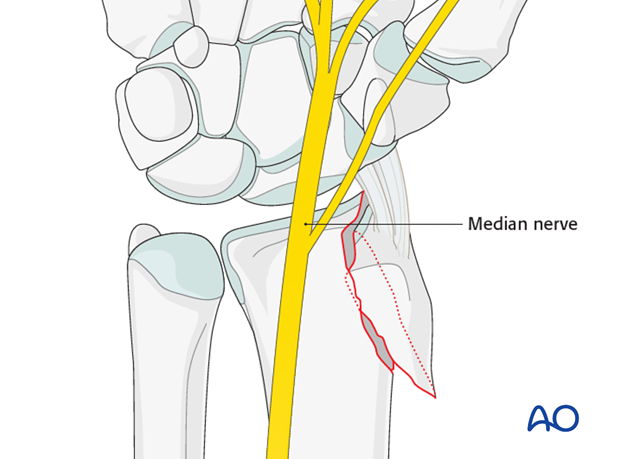
Associated carpal injuries
These injuries may be associated with shearing injuries of the articular cartilage, scaphoid fracture and rupture of the scapholunate ligament (SL). Every patient should be assessed for this injury. If present, see carpal bones of the Hand module.

DRUJ/ulnar injuries
These injuries may be accompanied by avulsion of the ulnar styloid and/or disruption of the DRUJ. If there is gross instability after the fixation of the radial fracture, it is recommended that the styloid and/or the triangular fibrocartilaginous disc (TFC) is reattached. This is not common in simple fractures, but may occur with some high energy injuries.
The uninjured side should be tested as a reference for the injured side.
It may not be possible to assess DRUJ stability until the fracture has been stabilized (as described below).

3. Patient preparation
The patient may be placed in a supine position for palmar approaches.
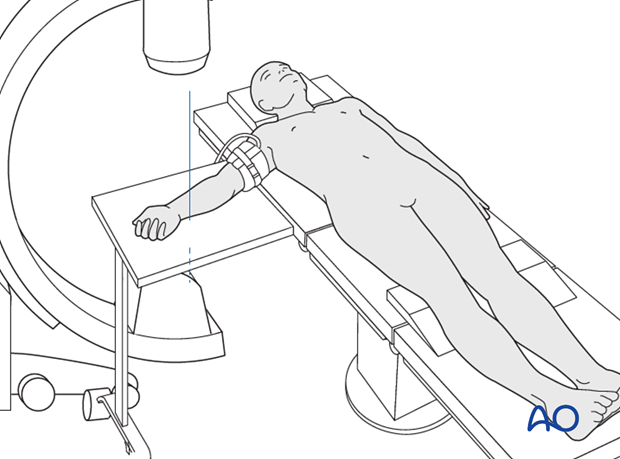
4. Reduction and provisional fixation
Periosteal elevator
If necessary, use a periosteal elevator to disimpact and derotate the radial styloid fragment.
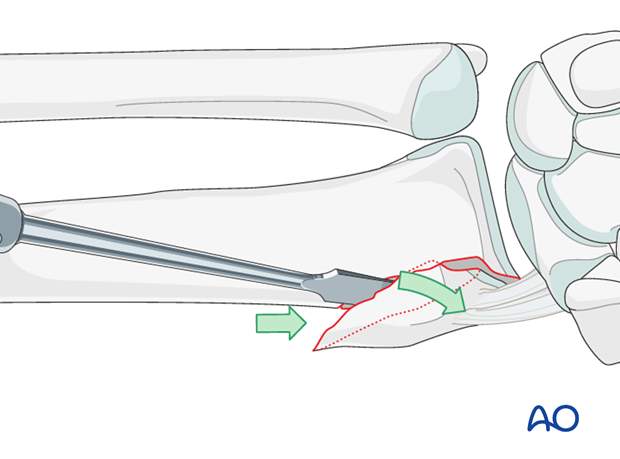
Provisional K-wire fixation
Insert a K-wire through the tip of the radial styloid to hold the fragment provisionally.
Confirm using image intensification.
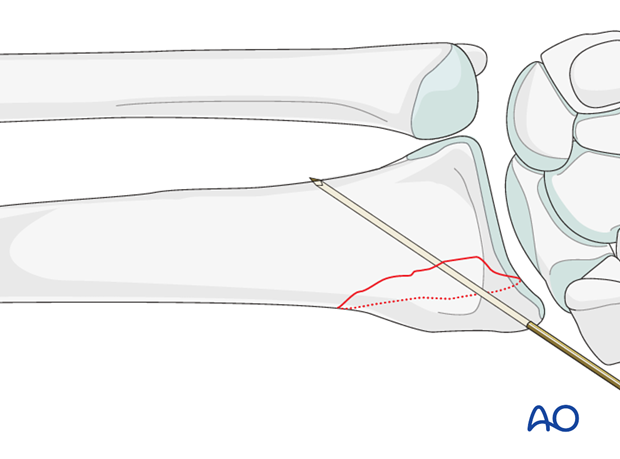
5. Plate fixation
Apply the plate to the bone. The distal end of the plate should end at the anatomic watershed zone of the distal radius.
Insert a screw through the oblong plate hole. Measure for length and choose a screw that will just engage the dorsal cortex.
Before fully tightening it, check the plate position using intraoperative imaging, adjusting the position of the plate as necessary.
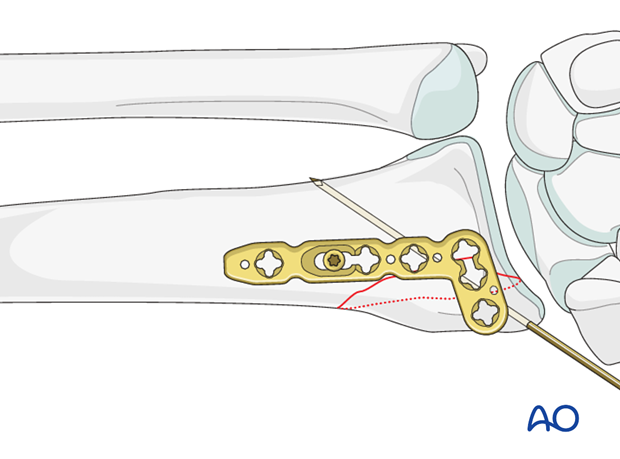
Insertion of distal screws
Insert at least two locking head screws into the radial styloid fragment.
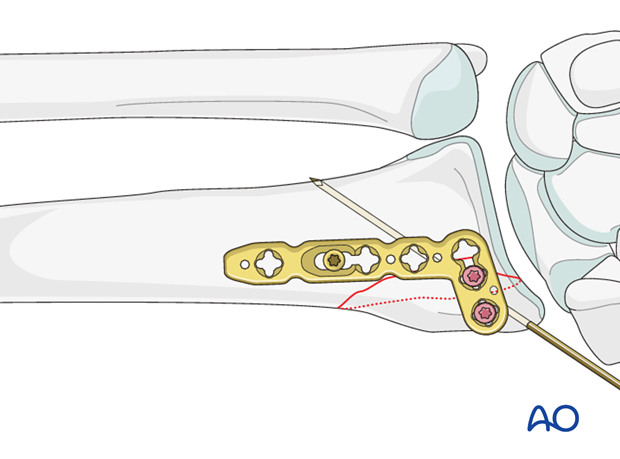
Care must be taken to contour the very radial part of the plate so that it does not protrude and irritate the flexor tendon of the thumb.
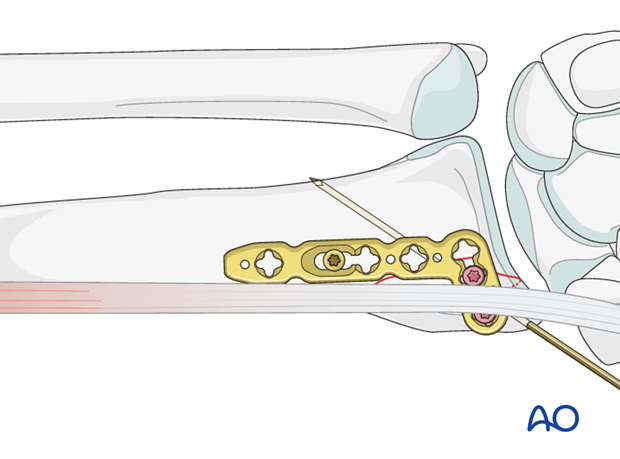
Confirm plate and screw position using image intensification
Confirm the distal position of the plate and screws using an image intensifier, with the beam angled 20° from the true lateral. This projection will profile the radial articular surface and visualize any encroachment of a screw into the joint.
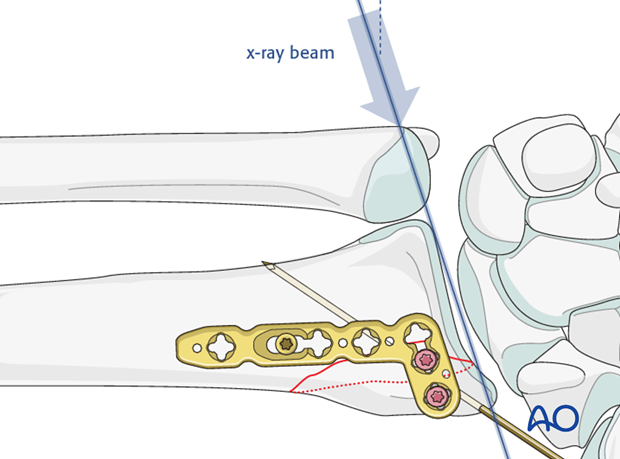
Additional proximal screw
Insert a final standard screw through the proximal part of the plate.
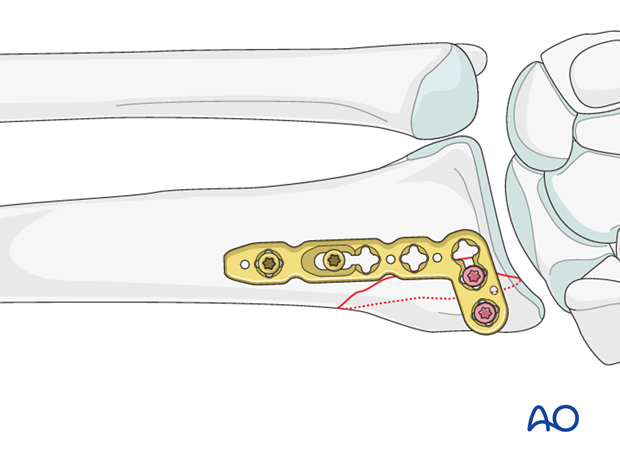
6. Assessment of Distal Radioulnar Joint (DRUJ)
Before starting the operation, the uninjured side should be tested as a reference for the injured side.
After fixation, the distal radioulnar joint should be assessed for forearm rotation, as well as for stability. The forearm should be rotated completely to make certain there is no anatomical block.
Method 1
The elbow is flexed 90° on the arm table and displacement in dorsal palmar direction is tested in a neutral rotation of the forearm with the wrist in neutral position.
This is repeated with the wrist in radial deviation, which stabilizes the DRUJ, if the ulnar collateral complex (TFCC) is not disrupted.
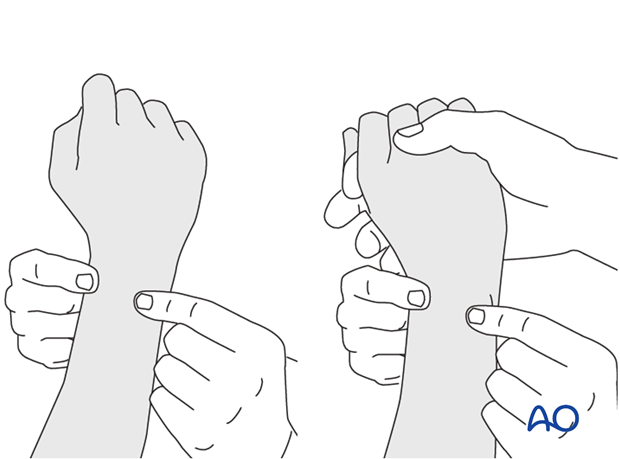
This is repeated with the wrist in full supination and full pronation.
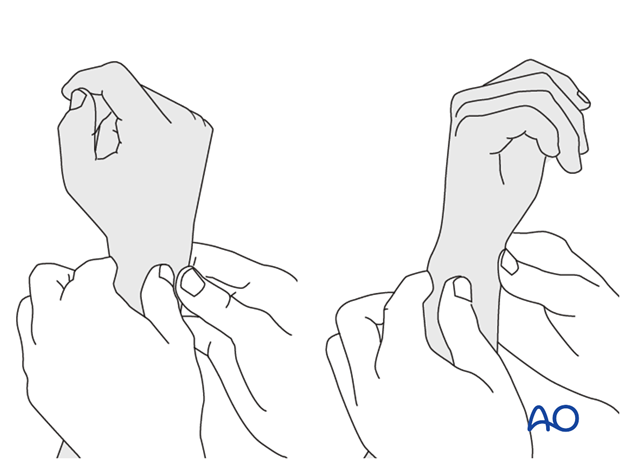
Method 2
To test the stability of the distal radioulnar joint, the ulna is compressed against the radius...

...while the forearm is passively put through full supination...

...and pronation.
If there is a palpable “clunk”, then instability of the distal radioulnar joint should be considered. This would be an indication for internal fixation of an ulnar styloid fracture at its base. If the fracture is at the tip of the ulnar styloid consider TFCC stabilization.
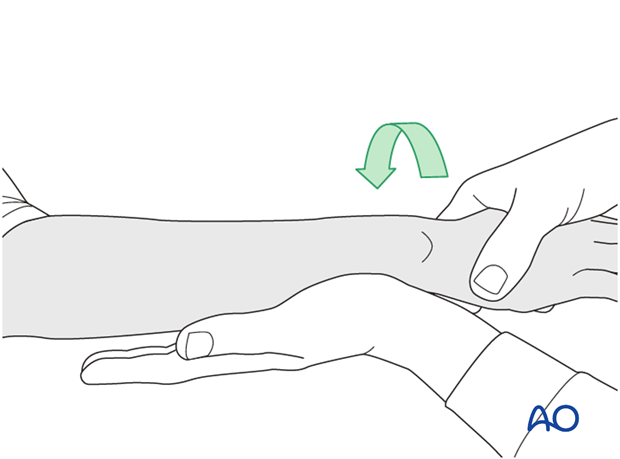
7. Aftercare
Functional exercises
Immediately postoperatively, the patient should be encouraged to elevate the limb and mobilize the digits, elbow and shoulder.
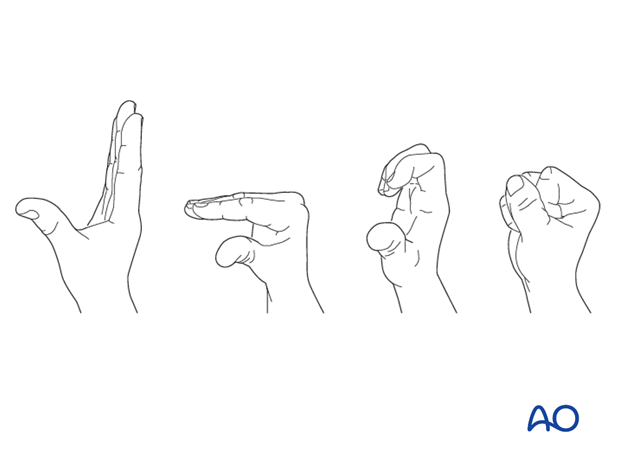
Some surgeons may prefer to immobilize the wrist for 7-10 days before starting active wrist and forearm motion. In those patients, the wrist will remain in the dressing applied at the time of surgery.

Wrist and forearm motion can be initiated when the patient is comfortable and there is no need for immobilization of the wrist after suture removal.
Resisted exercises can be started about 6 weeks after surgery depending on the radiographic appearance.
If necessary, functional exercises can be under the supervision of a hand therapist.

Follow up
See patient 7-10 days after surgery for a wound check and suture removal. X-rays are taken to check the reduction.
Implant removal
Implant removal is purely elective but may be needed in cases of soft-tissue irritation, especially tendon irritation to prevent late rupture. This is particularly a problem with dorsal or radial plates. These plates should be removed between nine and twelve months.













